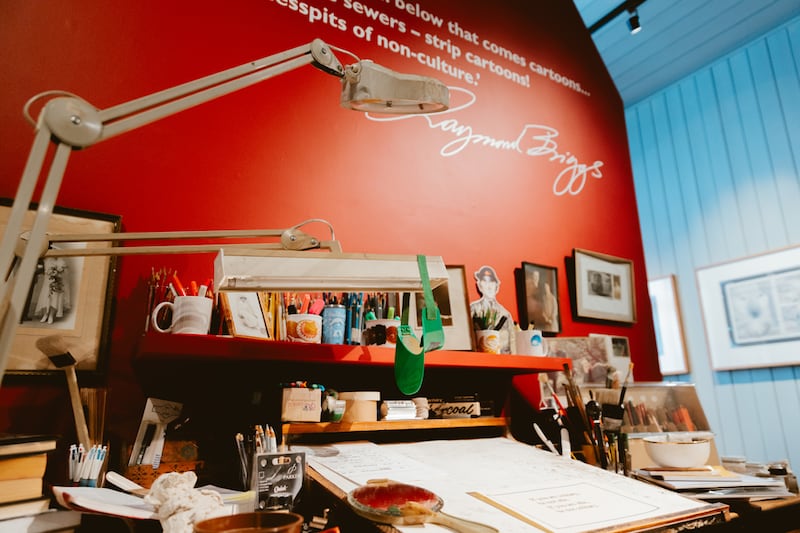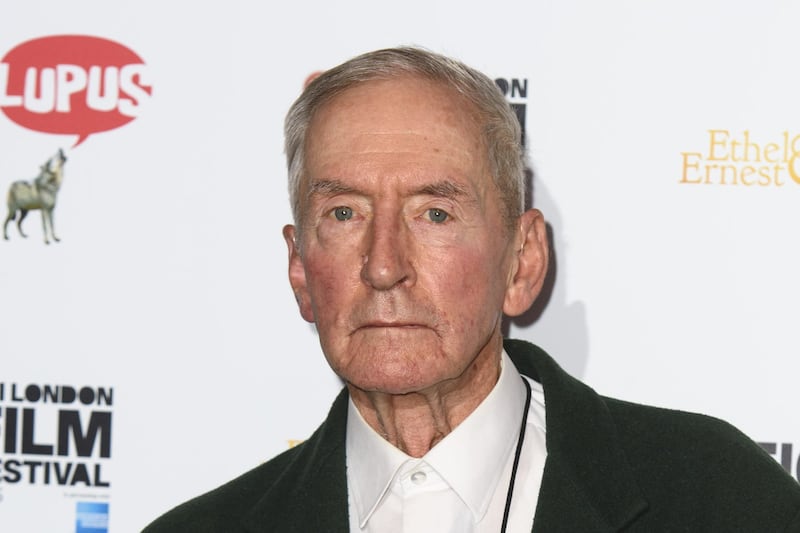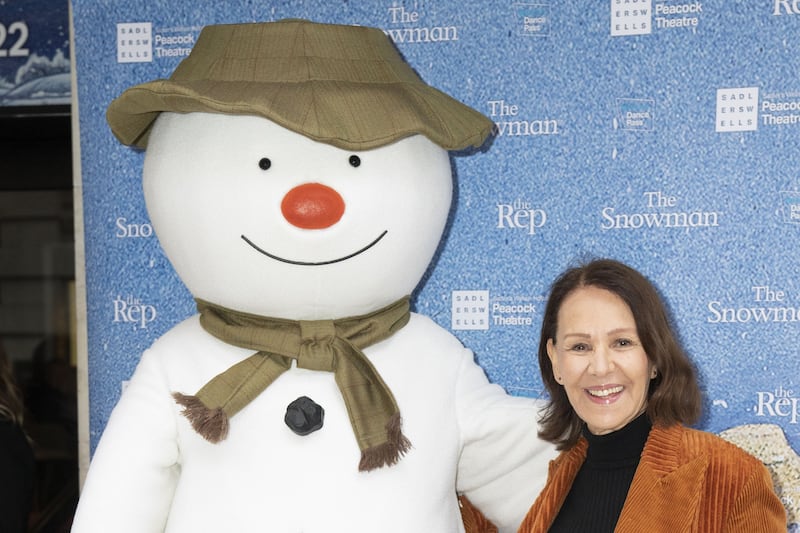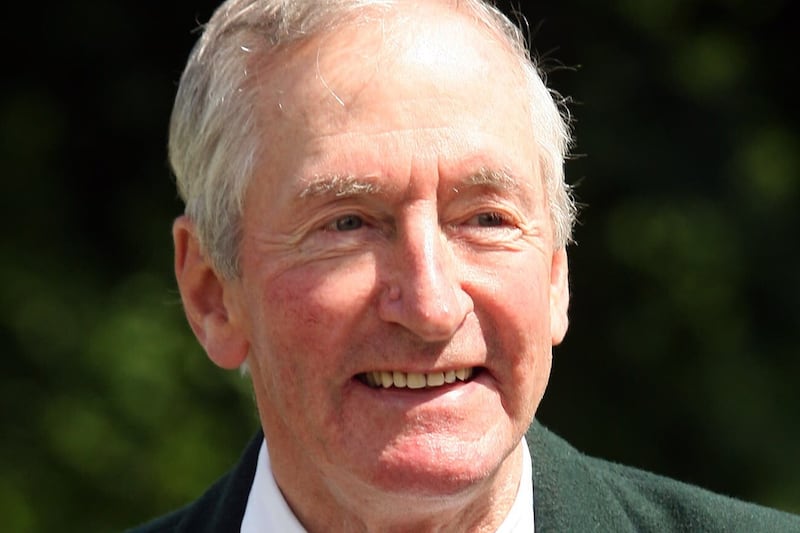Mog’s Christmas, The Tiger Who Came to Tea, We’re Going on a Bear Hunt and The Snowman and The Snowdog - just some of the beloved animations that capture the imaginations of viewers every festive season.
They all feature the handcrafted work of animator Robin Shaw, who will be sharing his knowledge with young people this weekend as part of Cinemagic Film Festival 2024.

“Watching The Snowman as a child was one of the main reasons I became an animator,” Shaw tells me.
“It was different from all the other types of animation I’d seen and was the first time I’d seen illustrations burst into life in such a striking, sublime way.”
He went on to work alongside his “life-long hero”, the late Raymond Briggs, on The Snowman and The Snowdog and the feature-length adaptation of Briggs’s graphic novel Ethel & Ernest, telling the story of his parents’ lives.
“Raymond approved everything I did with The Snowman when he was still alive, so it’s not difficult to carry on his work,” says Shaw, who for some years has been entrusted with both the animation and illustration of Briggs’s The Snowman and associated characters. In 2023 he created the images for The Snowman 50p coin for Royal Mint.
He got to “work closely” with another of his heroes, Judith Kerr, for the 2019 adaptation of her cherished picture book, The Tiger Who Came to Tea.
Read more: The Tiger Who Came To Tea author Judith Kerr discusses 50 years of classic book
And, when it came to adapting Mog’s Christmas, Kerr’s tale about the nice-but-dim tabby cat, which was broadcast last Christmas, he worked along with her children.
“Judith’s son and daughter, Matthew and Tacy, oversaw everything and made sure that It was in keeping with what Judith would have approved of,” explains Robin.

Does he feel a burden of responsibility to be faithful to the original authors, whilst putting his own artistic stamp on the animation?
“Strangely enough, it’s not actually that difficult. If you understand the soul and the emotion behind something, then all you have to do is expand upon that with the story that you’ve been given to adapt,” he says.
“Mog’s Christmas, for instance, is set in mid-70s London. I grew up in mid-70s London, and so I didn’t have any trouble getting into the heart and soul of that kind of milieu.
“There’s a scene on the high street that isn’t in the book - it’s something that I just made up. It was easy for me to do so because I just had to throw myself back into my emotional memories of being a child at that time.”
When it came to adapting The Tiger Who Came to Tea, Shaw again reached back into his childhood memories for inspiration.
“When I was a kid there was always something slightly scary about the tiger, and so I made sure that was something I kept in the film,” he laughs.
His advice to budding animators is to “draw, draw and draw again”.
“Computers are only as good as the people using them and the skills of the people using them.
“With the most recent film I had, Mog’s Christmas, I storyboarded the whole film in pencil and paper first, because when you draw you get ideas. That doesn’t necessarily happen sitting at a computer.”
There is subliminally something very special about work that’s been drawn or made by the human hand and played out in animation on the screen.
— Robin Shaw
Obviously technology has an increasing role to play in his job too, but Shaw still emphasises the need to blend the old with the new, and in doing so enhancing the animation’s emotional quality.
“We draw it all on tablets, but it’s still drawn frame by frame and coloured frame by frame.
“There is subliminally something very special about work that’s been drawn or made by the human hand and played out in animation on the screen.
“Even though you might not be able to see the joints, the human imperfections and idiosyncrasies, it touches you in a way that I have never been touched by CGI animation.

“With the classic animations I watched as a child, like Ivor the Engine and Paddington, you could see how they were made and it was magical. You know that it’s just pieces of paper moving about, but nonetheless, it tells a story that you’re engaged with on two levels.”
Lamenting the underappreciation of hand drawn animation, he recalls walking past a front room of a home last Christmas when walking his dog.
“There was one of these huge TV’s mounted on the wall in this living room and this awful CG pre-school series showing on it. I really pitied the kids watching this, because it was just moving noise and colour. There was absolutely no craft. But maybe I’m just being an old fart,” he laughs.
Animation is a time-consuming process, creating and sequencing multiple individual frames, each with their own set of movements and actions. Surprisingly, Robin says patience isn’t what’s needed to do the job.
“I’m actually a very impatient person. The key quality is persistence.”

Shaw’s other film credits include designer and illustrator on Paddington 2 and director on the adapation of Michael Rosen and Helen Oxenbury’s best-selling picture book We’re Going on a Bear Hunt.
“From the start, co-director Joanna Harrison and I were determined to make a timeless film that would become an instant classic and bring the book’s beautiful illustrations to life.”
He has also written and illustrated his own picture book, Me and My Dad, published by Hodder Children’s in 2017. But he won’t be turning it into a film.
“It’s very deliberately non-animation. I illustrated it in a way that would make it nigh impossible,” says Shaw, who has written two more books, but needs to “magic more time to work on them”.

Currently working on an unnamed animation, which could possibly be top of our Christmas viewing in 2026, he’s also developing Benji Davies’s Storm Whale books for the screen.
“The books are awesome. It’s sort of my pet project, but it’s a question of getting finance.”
Looking forward to working with eight to 14-year-olds in Belfast this weekend and giving them the knowledge to visually tell a story, he will encourage them to draw from their own personal experiences and memories.
“It’s very easy to think that your own story is not worth thinking about or telling, but we all do and I will literally challenge them to draw their own lives.
Let’s Animate! Storyboarding Workshop with Robin Shaw takes place at the Ulster Museum in Belfast on November 2 from 11am-12.30pm as part of Cinemagic Film Festival. Cinemagic.org.uk








